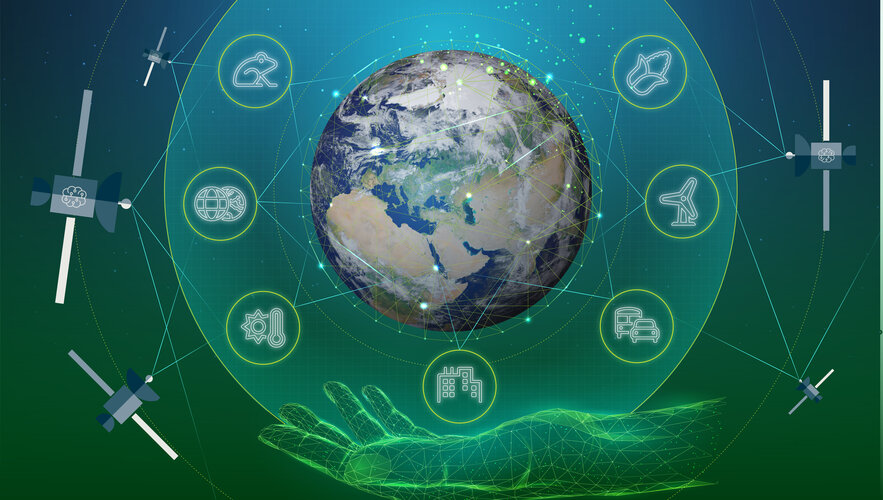ESA is planning to boost the use of green technologies through its proposed space for a green future accelerator. This accelerator will provide European decision-makers, industry, and society with essential tools and solutions to support a sustainable green transition towards a carbon-neutral, resource-efficient and resilient society. It will also stimulate the development, deployment and use of advanced data, science, technology, applications and services for sustainable life on Earth.
The accelerator concept ('space for a green future' sits alongside 'rapid and resilient crisis response' and 'protection of space assets') was introduced in 2021, but building a more sustainable world has been a focus of the Agency since its creation in 1975. From an alternative to rainforest-destroying soy crops, to pinpointing where energy-efficiency measures are needed most, in this article, we present five recent projects supporting the shift to more sustainable lifestyles.
Intelligent agriculture for an alternative to soy
Problem: Soy is one of the world's top four-most produced crops, but an increase in land used for soy production is resulting in the destruction of forests, savannahs and grassland. The development of sustainable alternatives is vital for feeding future generations.
ESA-backed solution: With 80% of the world's soybean crop being used for animal feed, DryGo is a company that aims to produce a new inexpensive, high-protein animal feed input called lemna – using Earth observation satellite data and communications satellite services. Producing lemna uses 99% less water than producing soybeans, and the crop grows eight times faster.
With ESA's support, DryGro is developing six lemna growing units in Kenya to pilot the new technology. To mitigate many of the factors currently limiting agricultural productivity, DryGro uses climate management systems that rely on a steady stream of data. These data come from Earth observation satellites, ground sensors, and weather forecasts.



